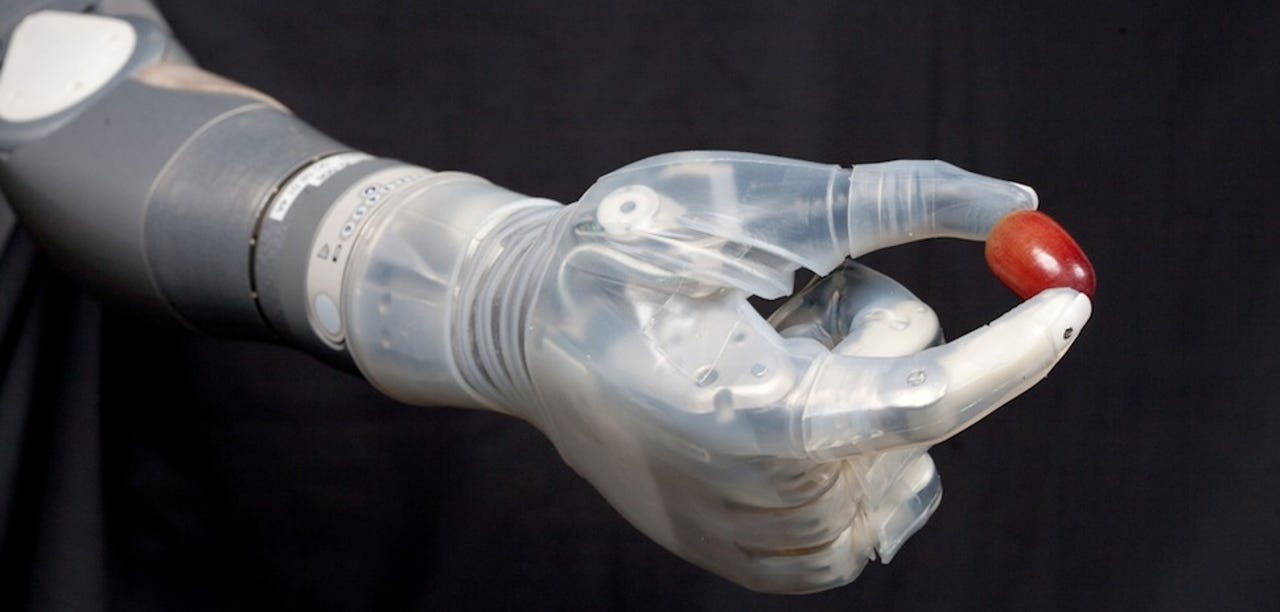Luke Skywalker arm gets the go-ahead


Dean Kamen, inventor of the Segway and numerous breakthrough medical devices, has spent years building what his team calls the "Luke Arm:" an advanced prosthetic that translates signals from a patient's muscles into actions in the mechanical fingers. It's nicknamed for the prosthetic Luke Skywalker receives in The Empire Strikes Back that acts like a real hand.
Now the arm is finally coming to market. Kamen's team has received approval from the U.S. Food and Drug Administration (FDA) for the device, officially named DEKA Arm System after Kamen's New Hampshire-based company, DEKA Research and Development Corp.
The prosthetic contains electromyogram electrodes to detect contractions in the muscles close to the device. Its computer translates those contractions as signals of the user's desire to move the arm and hand, which the device then does accordingly. The Luke Arm currently has six grip patterns. By selecting a different grip pattern, a wearer can switch from gently gripping a grape to firmly gasping a power tool. In stunning video demonstrations (here and here), a man performs tasks such as picking up an egg and depositing it across a table without breaking it.
The Defense Advanced Research Projects Agency (DARPA) has been supporting Kamen's arm since 2006 as part of its Revolutionizing Prosthetics program. As Justin Sanchez of DARPA Biological Technologies tells Businessweek: "Think about our military personnel, who can be great beneficiaries of these devices: before DARPA made an investment in this area the best we could give back to them was metal hooks."
Kamen's team has been testing their newest arm with dozens of soldiers who lost limbs in combat. About 90 percent of them could perform some kind of complex task with the arm, which led to the FDA's approval.
It's still so early that DEKA has yet to release the details of any plans to commercialize the device. One area where the company clearly has made improvements, though, is in its aesthetics. Where Kamen's 2008 prototype looks harsh and mechanical, the new Luke Arm has a semi-transparent cover to make it appear at least a little bit more organic.
The Luke Arm is not for every patient in need of a prosthetic. IEEE Spectrum reports that the arm works for patients who lost limbs at the shoulder, the middle of the upper arm, or the middle of the lower arm. It can't handle a limb that was lost at the elbow or wrist.
But even more sophisticated, lifelike prosthetics are on the horizon. Scientists are building interfaces to translate the signals in the brain associated with moving one's hand into actions in a prosthesis -- connecting the brain directly to the machine.
[FDA, DARPA via IEEE Spectrum]
Image: DEKA Research and Development
This post was originally published on Smartplanet.com